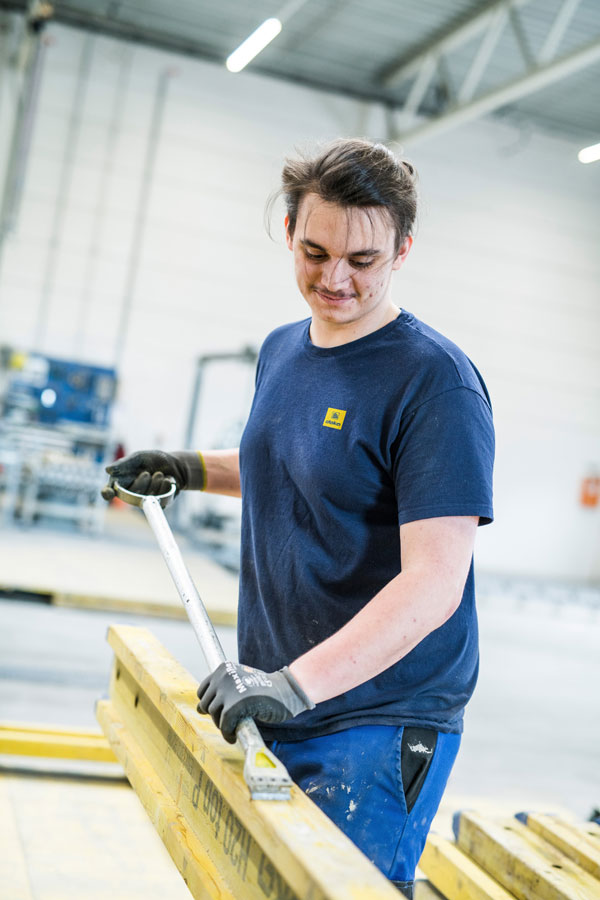Doka, a global leader in formwork and scaffolding, has become the first company in the construction industry to commit to the Science Based Targets (SBTi) initiative. This milestone reflects the company’s ambition to reduce emissions in line with the latest scientific guidelines and contribute to limiting global warming to 1.5°C.
Doka promotes sustainable construction practices, such as heated formwork that facilitates the use of CO-reduced concrete2 (Photo: Doka)
By aligning its goals with SBTi, Doka positions itself in the foreground global efforts to decarbonize the construction industry.
The construction industry is facing increasing pressure to mitigate its impact on the environment. The sector is responsible for approximately 37% of global greenhouse gas emissions, making it a key player in the fight against climate change.
Doka sees this challenge not only as an environmental responsibility, but also as a catalyst for building more resilient and sustainable business models that can drive long-term success in the evolving construction market.
On the way to net zero emissions
Commitment to SBTi is the foundation of Doka’s comprehensive sustainability strategy called “Net Zero 2040”.
“By committing to SBTi, we show that For us, sustainability is not just a buzzword – it’s serious business. We believe that sustainable practices and solutions are the key to helping our clients succeed in a competitive and future-ready construction industry,” says Robert Hauser, CEO of Doka.
Doka has set ambitious targets for reducing its carbon footprint. It has committed to reducing its Scope 1, 2 and 3 emissions in accordance with the SBTi methodology, ensuring that Doka’s climate goals are aligned with the 1.5°C target of the Paris Agreement.
By 2030, this means minimal a reduction of 42% for emissions from scopes 1 and 2. Emissions from scope 3, which includes all indirect emissions generated outside the company, must also be reduced by 42%.
Robert Hauser adds: “We are constantly working with our customers and suppliers to develop safer, more efficient and more climate-friendly solutions. Our commitment to SBTi reinforces our commitment to reducing greenhouse gas emissions, not only within Doka, but throughout our supply chain. “

By maintaining used products, Doka ensures a reduction in the consumption of materials and resources, allowing the products to remain in circulation for a long time (Photo: Doka).
Long-term commitment to sustainable progress
Doka’s leadership in sustainability goes far beyond its current commitment to SBTi. Over the years Doka has already implemented significant measures to reduce emissionssuch as increasing the use of renewable energy in its global operations.
In its headquarters in Austria, Doka switched to 100% renewable electricity through the expansion of photovoltaic systems and the transition to green energy. These initiatives are key to achieving the company’s long-term emission reduction goals, which are currently in the process of being validated by SBTi, but they are just the beginning.
In addition, Doka’s leasing model contributes significantly to the circular economy, which, together with decarbonization, is another key pillar of the company’s sustainability strategy. By renovating the formwork after each use in special service centers, Doka reduces the consumption of materials and resources, extending the life of its products.
The company is also exploring the use of recycled, low-carbon materials in its systems, to further reduce the environmental impact of construction projects.
With a strong focus on innovation and collaboration, Doka continuously collaborates with leading experts and organizations in the industry to promote sustainable practices, such as the use of intelligent heated formwork which enable the use of concrete with reduced CO2 on construction sites.
Doka is also a pioneer in calculating the Product Carbon Footprint (PCF) for its range of over 7,000 products, as well as co-initiating the joint development of the first PCF calculation criteria for formwork and scaffolding in the construction industry.
Source: www.gradjevinarstvo.rs


